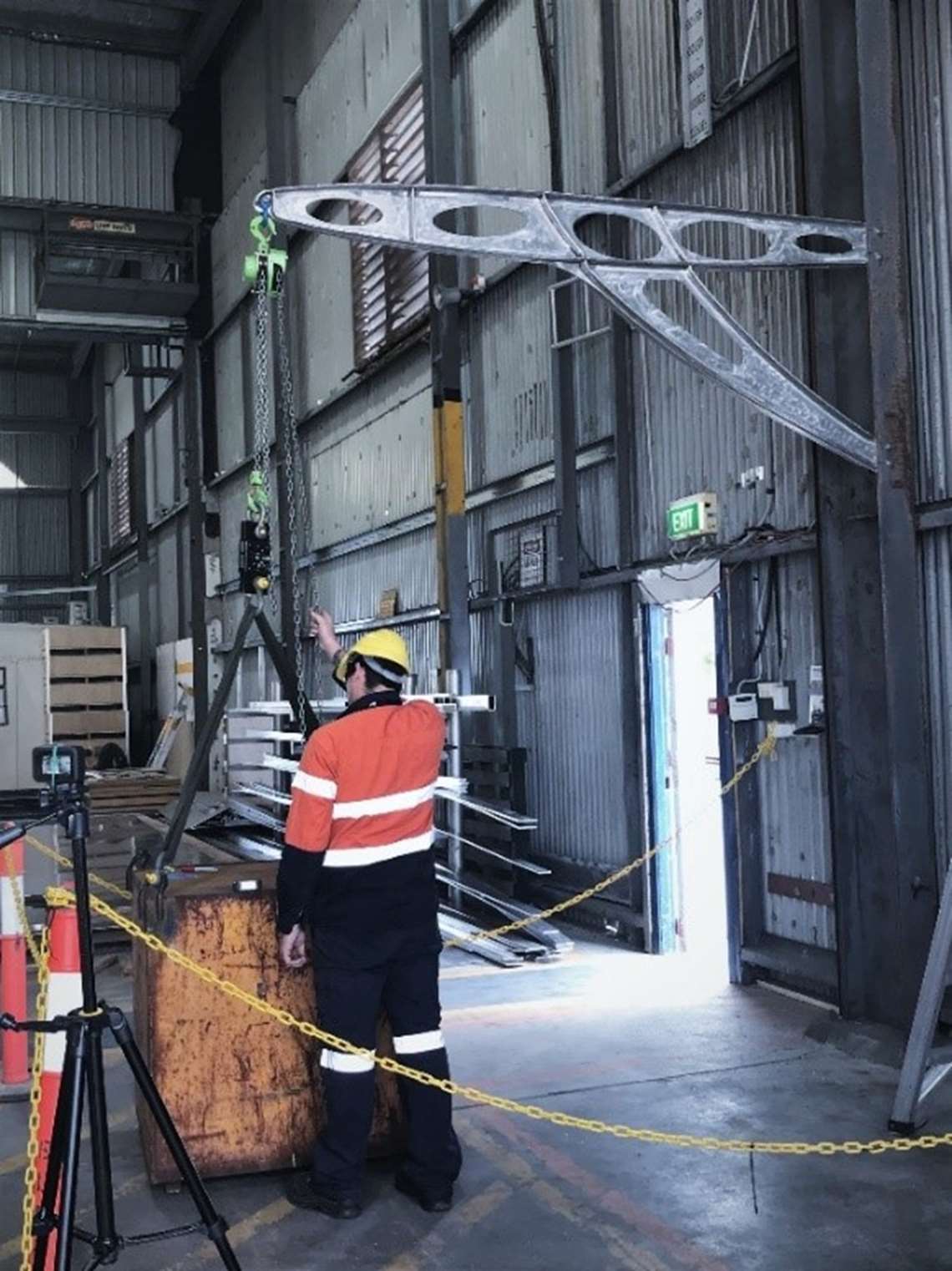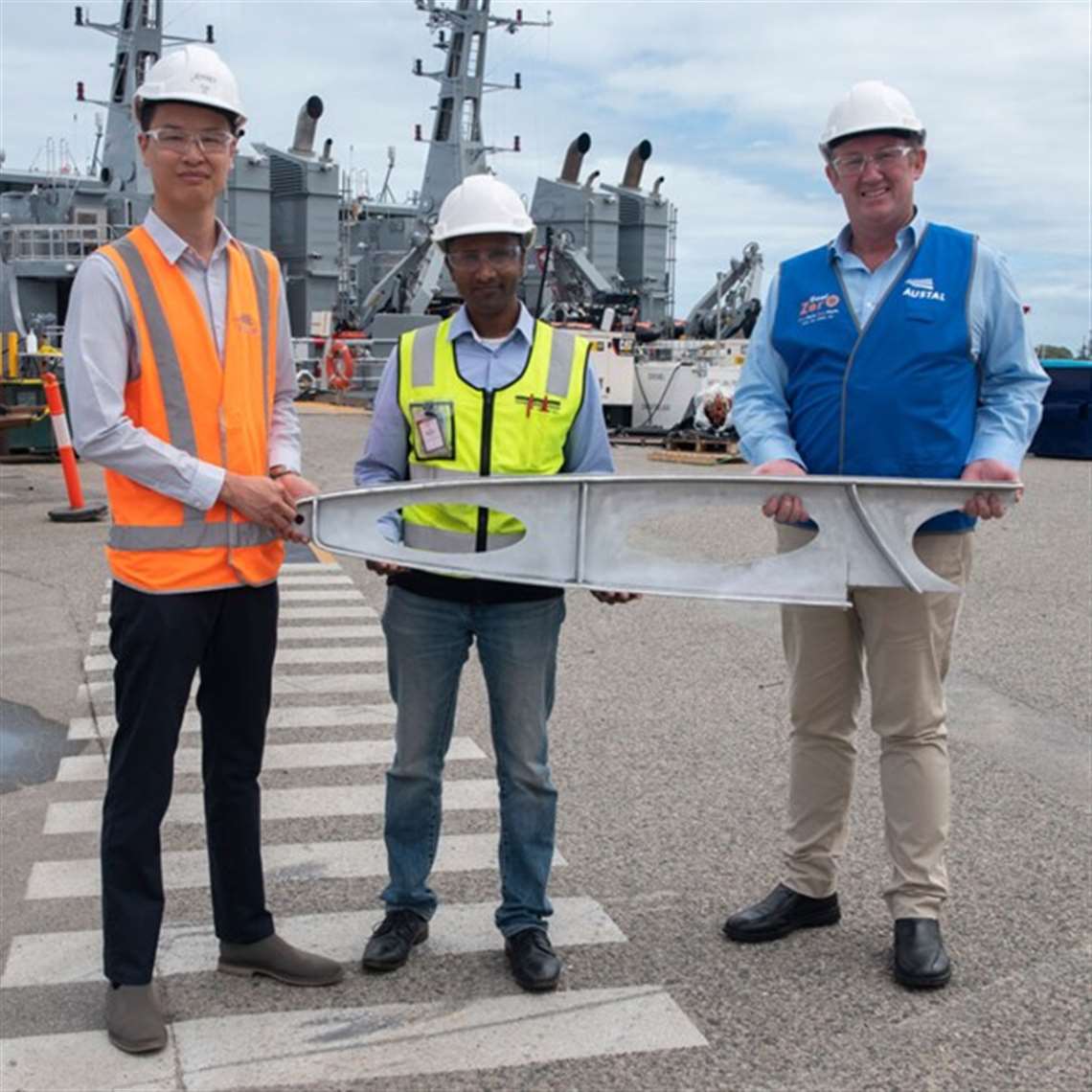3D printed crane gets DNV approval
26 March 2021
 Austal load testing the davit crane produced using wire additive manufacturing. Photo: Austal Australia
Austal load testing the davit crane produced using wire additive manufacturing. Photo: Austal Australia
Crane parts made by 3D printing have been formally verified by DNV, an independent risk management and quality assurance body.
Australian ship builder Austal and wire additive manufacturing specialist AML3D worked with Western Australia’s Curtin University to complete the design, production and testing.
AML3D and Austal Australia received the verification for an aluminium personnel recovery davit crane for naval applications. Australian company AML3d used its wire additive manufacturing (WAM) technology to produce the crane for Austal.
The three metre-long crane was designed and produced to meet international and naval specifications. A function test then saw application of more than twice the design working load. In addition to the load test, there was non-destructive and destructive testing to help determine suitability for the final verification.
Commenting on the achievement AML3D chief executive officer, Andy Sales, said, “We’re proud to have been able to partner with Austal and demonstrate the advantages of our proprietary wire additive manufacturing (WAM) capabilities in the creation of the davit arm. Additionally, we are equally as excited to see this WAM printed component receive an official verification statement by DNV. This now offers a verification pathway for a much wider range of components that can now follow a similar validation process.”
 Holding a sample of the WAM davit crane are, left to right: Austal technology project manager, Jeffrey Poon; DNV representative Jude Stanislaus; and AML3D chief executive officer Andrew Sales. Photo: Austal Australia
Holding a sample of the WAM davit crane are, left to right: Austal technology project manager, Jeffrey Poon; DNV representative Jude Stanislaus; and AML3D chief executive officer Andrew Sales. Photo: Austal Australia
Bright future
Sales continued, “This is a fantastic achievement by the AML3D team, Austal and our other partners in this project. Working with Austal’s vision for implementing additive manufacturing has been a further endorsement for our own business model and we’re excited for the future.”
Austal chief digital officer, Andrew Malcolm, said, “Austal Australia has been working with AML3D since 2019 on the development of hybrid manufacturing approaches that put robotics side by side with our highly skilled tradesmen and women to fabricate large complex structures.”
Malcolm continued, “Wire arc additive manufacturing, or WAAM, has the potential to enable a productivity step change in shipbuilding, able to 3D print marine grade metal structures at a scale well beyond other commercially available metal 3D printing technologies.”
For his part professor Chris Moran, deputy vice chancellor research at Curtin University, said, “Curtin University is proud to have assisted Austal in the characterisation and performance analysis of additive manufacturing materials in highly corrosive marine environments.”
In simple terms the WAAM equipment looks like a MIG type welder with the torch fixed in a computer controlled multi-axis head. The filler wire is fed and melted electrically and deposited where needed according to a 3D CAD type program.
STAY CONNECTED



Receive the information you need when you need it through our world-leading magazines, newsletters and daily briefings.
CONNECT WITH THE TEAM








